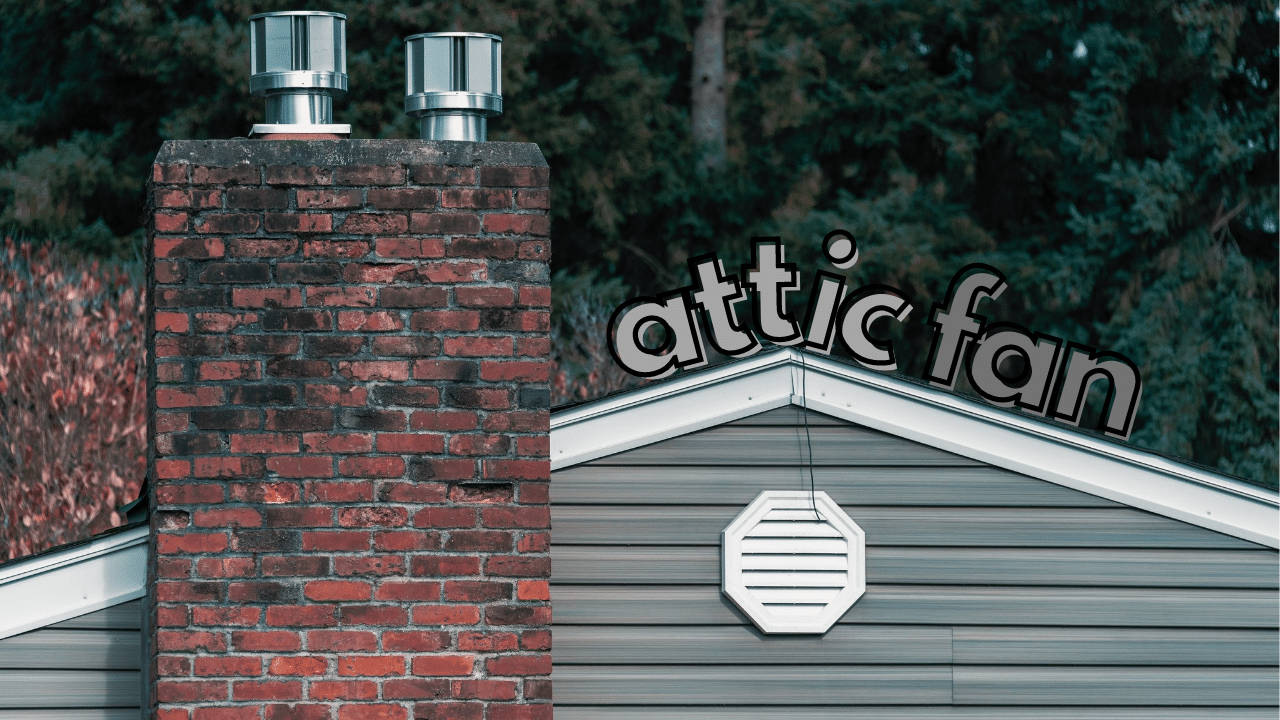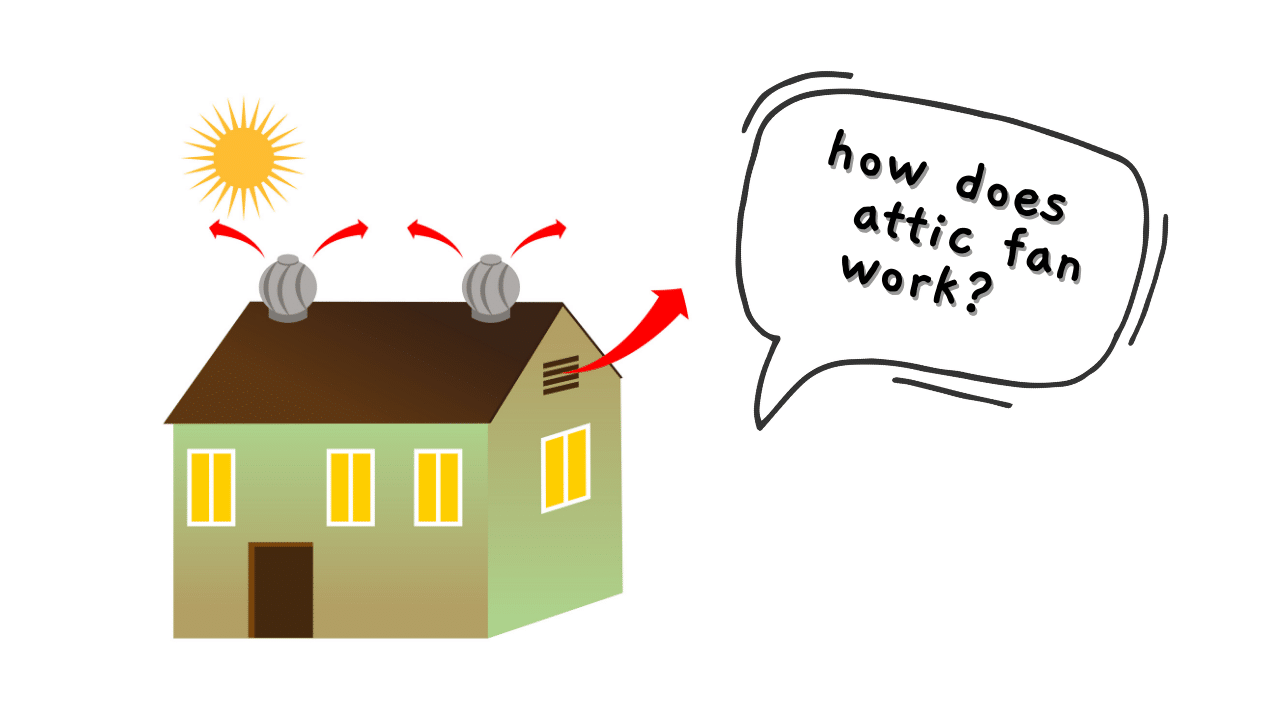Attic fans promote a cooler house and save power by making the air conditioning work less. The theory put forward by the marketers of attic fan systems is that an attic fan purges the super-heated air tapped above the ceiling, preventing the rooms below from becoming warm.

Solar heating of the roof can result in temperatures as high as 200 degrees Fahrenheit and 150 degrees Fahrenheit inside the attic. An electrically powered fan is supposed to extract the hot air and draw in cool air from outside according to the manufacturers of such systems.
This claim is highly disputed by roofing installers and architects alike. (Related: Drop The Temp: Here's How Much Attic Fan Installation Costs) Roofs are designed to be well ventilated as cool air is drawn in via the downward-facing soffits and drawn upwards by the warm convection air currents and exits via the vents at the apex of the roof. Let's look at the claims that attic fans are efficient more closely.
Do Attic Fans Really Work in Cooling the House?
The roof is designed to create a well-ventilated and dry attic above the house and which is sealed and insulated from the rooms below the ceiling. If the interface between the ceiling and the attic is not sealed and insulated, the draft effect of the air flowing in from the soffits and out via the top vents will draw colder air from inside the house below.
The air pressure inside the house should be slightly positive, thus limiting dust and warm air ingress. The natural airflow design for maintaining a low temperature and humidity inside the attic must be isolated from the airflow in the house.

The attic is often a useful space to house utilities such as air conditioner ducting and hot water systems. Subjecting these utilities to extremely high or low temperatures and humidity will be detrimental to their operation and durability. The airflow through the attic must be in balance and due to natural convection.
Installing attic fans to extract hot air from the attic space may create a vacuum that will draw air through the ceilings below or via the soffits outside the house. The attic fan may draw cold air from the house, causing the air conditioner to work harder as the cold air drawn out has to be replaced by warm air from outside the house that will require additional cooling.
The design of the roofing systems, when done correctly, will eliminate the need for additional fans to be installed to assist with the natural airflow. If you live in an older property where the heat buildup in the attic is high, contact a roofing specialist to identify the problem.
Find out what prevents the natural convection air flow through the attic. It may be that the soffit inlets are clogged with a spray-in insulator or that no air inlets were in the original design. It may also be the hot air outlets in the roof are blocked for some reason. A naturally ventilated attic should be about ten degrees Fahrenheit above the outside ambient temperature.
When the ambient temperatures are in the nineties, the attic temperature should only be ten degrees higher in summers. If a heat buildup in the attic causes a higher than ten-degree temperature differential, the root cause for the poor airflow must be found.
Installing an electric fan to extract hot air is treating the symptom and not the cause of the heat buildup. The principle that hot air rises drive the natural movement of air in nature. It is no different in your attic. You do not need to power a natural process; you need to remove the restriction to airflow.
In winters, the ambient temperatures may be well below freezing, and the attic temperature may also be only ten degrees above. The airflow will still be flowing in from the soffits and out through the top vents in the roof. You will have to insulate air conditioner ducting and other utilities from the extreme cold.
What is the Best Way to Keep Attic Rooms Cool?
Attics can be useful to provide additional space for accommodation, workrooms, or utility devices. If hot ambient conditions make the temperature in attic rooms unbearably hot, consider the following measures:
- 1Seal all cracks and gaps, allowing hot air into the attic.
- 2Upgrade the insulation between the roof and the attic.
- 3Install radiant barriers between the roof and the attic.
- 4Add reflective roofing or paint the roof with a lighter color.
- 5Install a mini-split air conditioner dedicated to cooling the attic.
- 6Install additional soffits and ridge vents to allow for natural airflow.
- 7Install attic fans to extract heat and draw in cool air from the air-conditioned house.
The cooling of an attic is a function of the design of airflow from the soffits under the roof's overhang. Air at ambient temperature is drawn in via the soffits via the gaps in the roof trusses and into the attic. As warm air rises, the air will flow up and out of the ridge vents at the apex of the roof.
The number of soffits must be in balance with the ridge vents to allow for air to flow freely through the attic, preventing a buildup of moisture that may lead to mold growth. One square foot of soffit venting per 300 square feet of attic surface is a rule of thumb.
Attic fans should be a last resort, and care should be taken to seal the door to the attic tightly to prevent cool air from the house from being drawn into the attic making the air conditioning work harder.
Conclusion
Attic fans are seen as a last resort for lowering the temperature in an attic and preventing the buildup of heat in the attic from radiating down into the house's living space. The correct design of the roof system should prevent the need for attic fans as the natural convection of ambient air through the attic should limit the temperature difference to not more than ten degrees Fahrenheit.
If you are faced with this problem, get advice from a roofing specialist or an architect. Marketers of air conditioner systems and attic fans will sell you their expensive solution. The solution may be as easy as raking the blow-in insulator off the soffit inlets or installing some radiant barrier to the underside of the trusses.
Attic fans are seldom the only solution needed to make your attic space a comfortable temperature. Get advice and install the simplest lowest-cost remedies first.
